[youtube width="640" height="360"]http://www.youtube.com/watch?v=reOz9-q1nyw&feature=share&list=UUqfeXppJ0gH-xMteusTeVEg[/youtube]
Ryan Riess attended one of the earliest Underground Strength Coach Certifications.
He hit the nail on the head with his response:
- Build the foundation
- When ready, teach the Olympic lifts
- The benefits of Olympic lifting in terms of explosive power, mobility and athleticism are awesome
On the flip side:
- They DO take a lot of time to teach, even an expert Coach has to understand that training athletes in sports is not something you get to do 5 x week. These athletes are at sports clubs working on athletic skills. MOST of our athletes at The Underground train 2 x week. That's only 2 hours of training
- When others argue with me that athletes should learn O Lifts from the get go they have very likely NOT seen the state of fitness / strength levels that athletes have nowadays, even high level athletes. There is a HUUUUGE strength deficit, one that is shockingly poor.
I am personally implementing the Olympic Lifts into my own training. I LOVE them and am only a rank beginner.
If you're a Performance Coach, I would love to hear your experiences with teaching the O Lifts to athletes. Drop a comment below, thanks in advance!
Live The Code!
--Z--
PS: Click HERE to see our up coming Underground Strength Coach Certification.
Both NJ And Austin Certs are discounted for NOW.
Click HERE For NJ Cert Details and HERE for Austin Cert Details

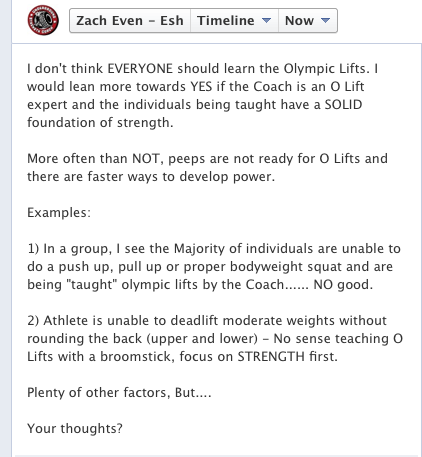
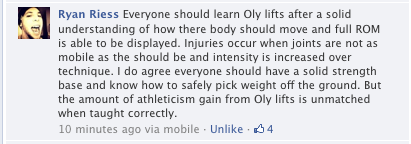
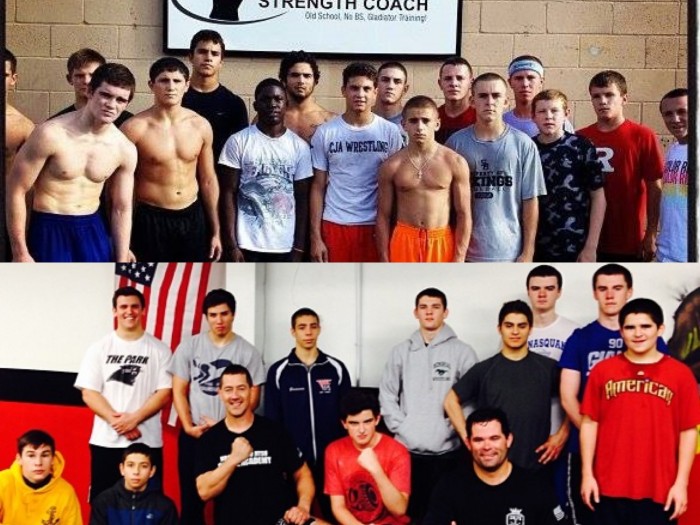
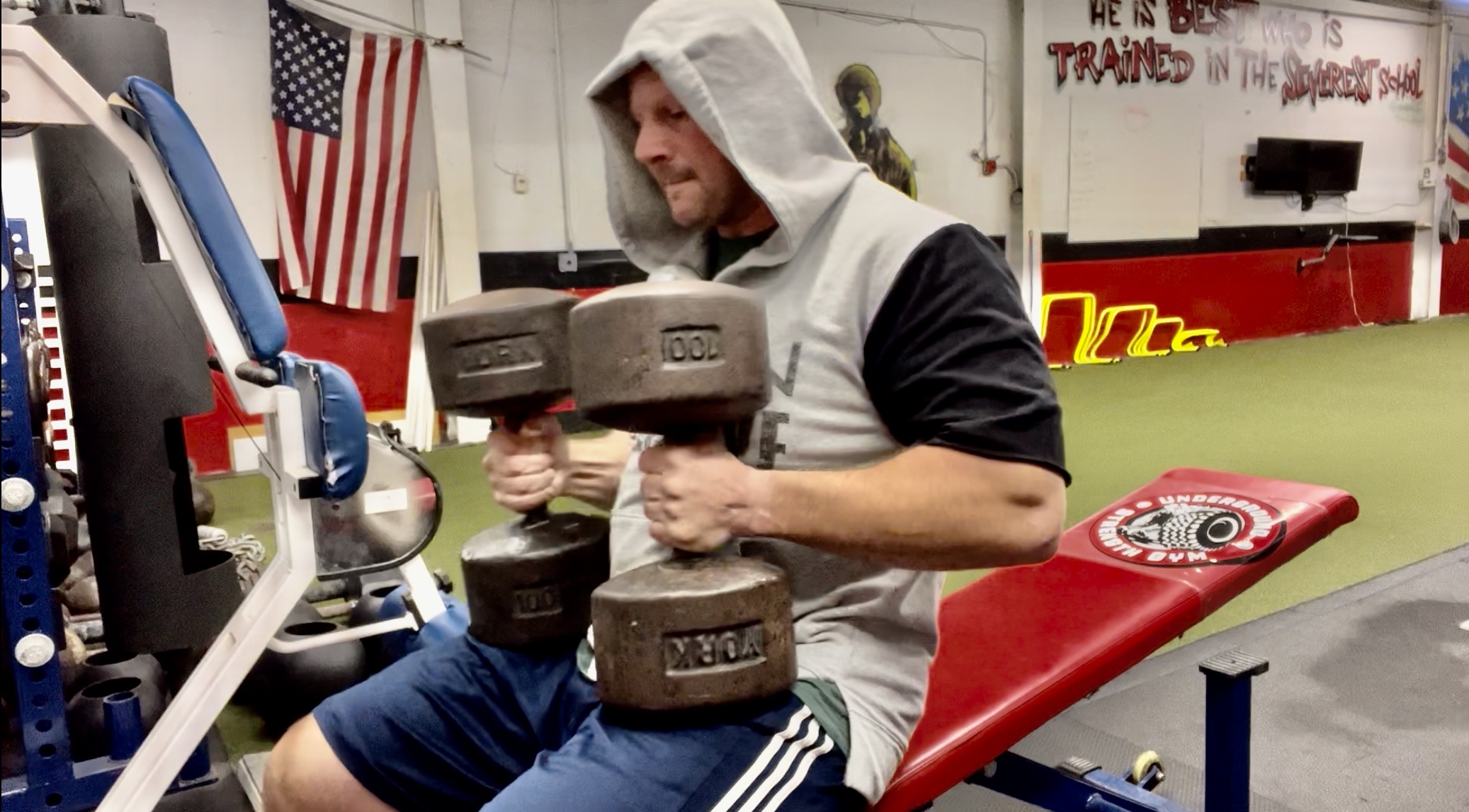
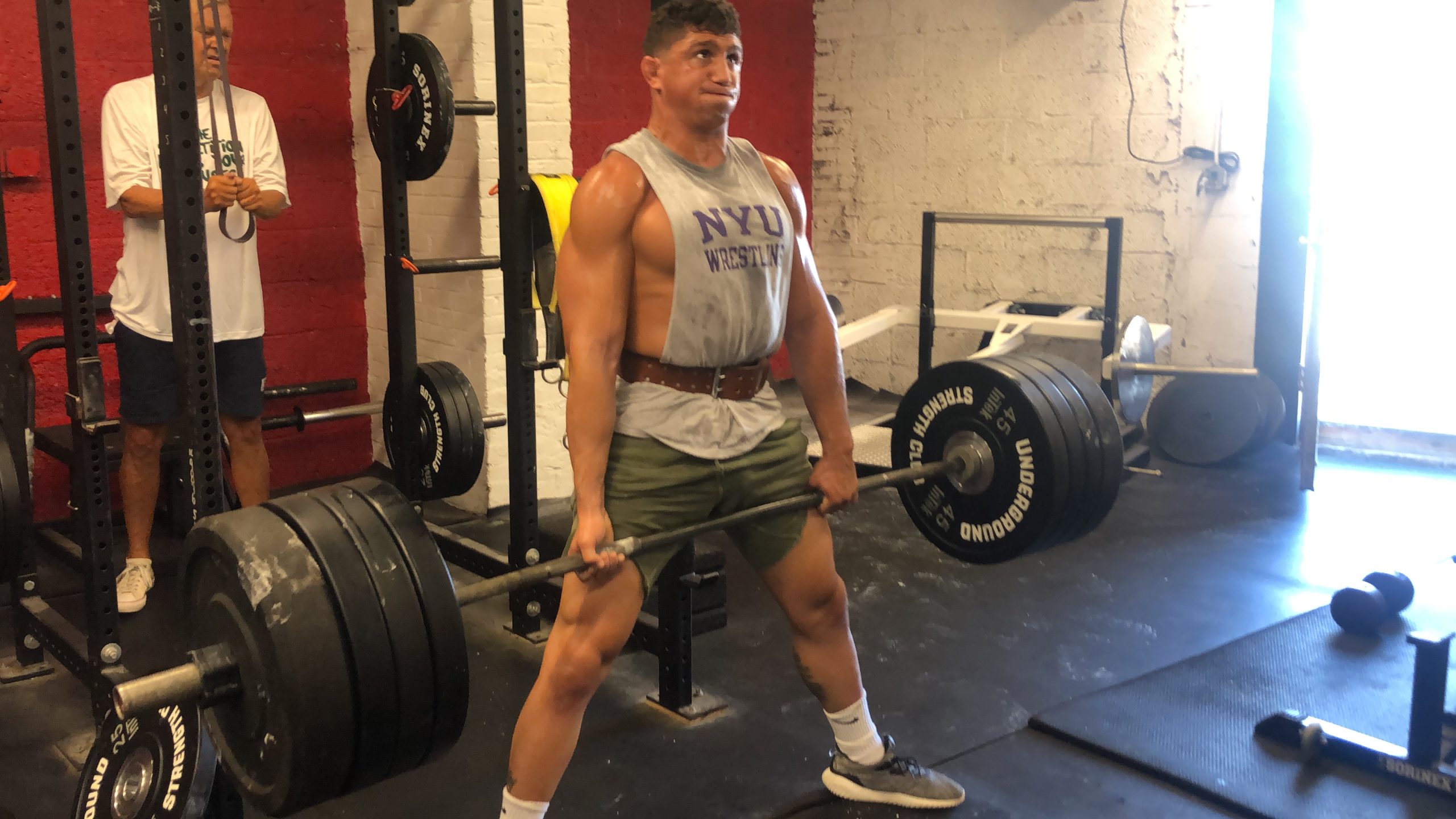
12 Responses
I work in a school with a lot of rugby players. It was only yesterday a p.e teacher sent a boy to me to practice some cleans. He could hardly even squat. Unless the foundation is good it’s not worth it. It could lead to an injury and you won’t be able to create the all important hip drive if form is lost. Instead we worked on perfecting his deadlift and kb swing. Once these are strong I would then move to cleans. Olympic lifts are amazing but don’t run before you can walk
I fully agrees with the idea of building strength first.
I would add that a good foundation of strength should include a focus on stability and control.
Not on Bosu balls but rather can they do slow push ups on the rings with minimal to no shaking. Can they do lunges and squats with a phase at the bottom and no leaning while standing back up.
I’ve found this sort of comets body control had done wonders for any time when I need to lift and move something heavy.
Zach,
I agree with you 100% on waiting till the athlete is strong enough to handle their own bodyweight first before moving on to the very technical Olympic Lifts. If they are squating with the knees coming in, doing push ups with an arch in the back, and can even do a proper full range pull up; how on earth do you expect them to pull a bar from the ground to over their head with proper form? I see can see it right now and it hurts just thinking about it.
Now going off subject what do think about the Olympics dropping Wrestling in the 2020 games? The IOC says it is because of TV ratings and ticket sales. Since when were the Olympics about making money I thought Olympics were suppose to be about the amateur athlete a no name from no where and their dream to be the best in the world with no source of income from sponsors. But I guess it is ok for the IOC administration to take home a big pay check at the end of the day (greedy bastards). How do you get rid of the oldest sport in the Olympics and the World?
Wrestling is one of the oldest Olympic Sports, the people making these decisions must seriously be on drugs, very pathetic to hear this shit.
I think there are stupid sports like hula hooping in the Olympics.
It’s ridiculous.
Hopefully it won’t get voted out, HOPEFULLY!
I lean towards not teaching the o-lifts with younger athletes simply because we could be developing the strength and power with other “easier” progressions. I like MB throws for building power with very little learning curve. Chad at Juggernaut Training Systems explains this well in his Juggernaut Method.
Personally I had a little experience with hang cleans and hang snatches when I was a student-athlete, but recently got Wil Flemmings dvd Complete Olympic Lifting because I wanted to develop the other (full) o lifts. Great progressions and teaching cues/drills. As I feel more adept at using them myself, I may introduce them to my “older” student athletes who have a good training base.
I never understood the necessity for clean/jerk with athletes when you could front box squat and box jump safer with better results.
Even a skilled trainer should evaluate their time and check ego. Just because you can teach them doesn’t mean you should.
If you teach it the whole training session should be dedicated to it. No quick review and then hit it. And every time after that when you implement it it should be by itself because it is very complex.
For my buck I like the snatch. Although I don’t care for the traditional snatch. Dumbbells or one handed oly bar. That is my training not what I would use for athletes.
Front box squat followed by box jump. I think Louie Simmons recommends that if you want to oly lift you should start from your knees. I tried it and wow it is crazy. Otherwise he said you could box squat and box jump. Better and safer.
Non athletes would be dependent upon the individual. If they want more and more then I would show them the snatch, but if it is not a concern I would save my time and frustration.
Like the IOC you can’t change what is taught at high school or college weight rooms.
That leads me to my problem with the IOC. Either they let wrestling be and continue with the tradition of the Olympics (founded on Running, Throwing and Grappling) or they change their name to the Modern Sport Events.
Ticket sales-funny since they sell out every time!! TV ratings-Well sorry but put it on at a better time and you will have more viewing. When every prime time slot is filled with gymnastics or swimming what do you expect! The spotlight sports that are the foundation sports (running, throwing and grappling).
That is the world we live in! Popular wins everytime-“Sometimes standing for what you believe Means standing alone!”-Honor Never Dies-Hatebreed.
I am not an expert in weightlifting but I am a certified coach. I agree the focus with a new athlete should be strength first with a focus on being able to move your own body, then move weight. With that being said, focusing on the mechanics with a broomstick/technique bar can help teach kinesthetic awareness and help an athlete discover their body during the warmup. The bigger problem with weightlifting is that too many coaches care more about the weight then about the technique, it is important in all lifts but critical to injury prevention with the O lifts. On the whole I agree with Zach.
Strength is the glass and all other athletic qualities go into that class. Also, Brett Contreras has demonstrated (with substantial scientific evidence) that heavy kettlebell swings are equally beneficial, if not superior to certain Olympic lifts. With much less of a learning curve also.
Hey Zach,
Totally agree that the foundation of basic strength via body weight should be in place (we use bw, bands, light dumbbells, etc in addition), however there are implements that still allow young athletes to correctly learn positions without the need to even touch a 45 lb bar.
Not every gym has access to these, but 5kg training bars are great for adding just enough resistance to the movement for younger athletes i.e ages 10-12 – teaching a clean with a broomstick is almost impossible, but a very light bar that spins is enough to let them “feel” the movement better, rack a bar on their shoulders, etc. Snatches and jerks are a different story. There are also technique training plates (we have 2.5kg and 5kg training plates) that are the same size as any regular sized bumper plate but a fraction of the weight and are rock solid (hitech plates are my favorite – they don’t bend or break) that can be added to the training bars over time.
From my experience the younger athletes for the most part can grasp the concepts very quickly and safely if taught correctly. When the progressions are kept simple and enjoyable for younger athletes, they LOVE doing the lifts. Plus the full range of motion helps build athleticism, coordination, awareness, etc. Just my two cents.
Great topic, Zach!
USAW Sports Perfomance Coach
Just following those progressions from the top down while working on bulding strength works out rather well. Especially if you get to work with a kid in junior high/ high school, they work well. If they take two months to move on so be it they are still working on building that foundation you where talking about. I like working from the top of the movement down as it focuses the athlete on that specific progression. Again USAW has a great layout on how to do that, I follow there progressions ALL THE WHILE working with the athlete on the foundation stregth eliments. Take your time with those movements.
Rob, BIG thnx brutha, I am gonna get my ass to an intensive O Lift Course soon. One of my Coaches holds 1 day camps and we’re gonna host at my new gym, which will give me the time to get in there and LEARN!
Hey Zach,
This is Chris Weiler from Titanium – Great topic and sound input so far!
The only major consideration not listed is regarding Structure. Not every one’s skeleton is designed to O Lift well. Just as many are not designed to run distance, play basketball, row or do gymnastics. Besides proper joint mobility of ankles, knees, hips, spine, shoulders and wrists, the big O and power lifts require a proper length ratio between the trunk, femur and leg. At the competitive level there is a reason why average O lifters have similar statures. This holds true for swimmers, gymnasts, etc. Their bio-mechanical structure makes them ideally suited for the range of motion their sport requires.
For everyone else, it’s like trying to squeeze a square peg through a round hole – you can try and force it, but typically you will have to wear down part of the structure while trying to make the athlete perform the lift. It’s for this reason that proper assessments should be performed to flesh out what is restricted in the athlete’s body and address those restrictions to develop a foundation to support max stability, strength and power development.
So it’s not always just a question of strength or development. Some athletes structures are just not designed to perform those lifts and therefore should not. You can train and change soft tissue, but you can’t change structure.
The O lifts are just a tool in the toolbox. It’s up to the trainer/coach to determine the right tools to use based on the needs and ability of each athlete, which brings me to my final point. The athlete should not be introduced to any training tool until the athlete can demonstrate SCC – stability, coordination and control through the required range of motion. I think it’s important to remember that these lifts aren’t necessarily magic, power getting exercises. They are all at their root just joint ranges of motion and it is the How they are performed within the context of an athletic development program that determines their need, value, effectiveness, outcome and therefore training effect.